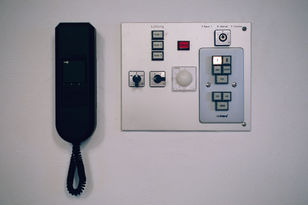top of page
"There isn't any particular relationship between all the messages, except that the author has chosen them carefully, so that, when seen all at once, they produce an image of life that is beautiful and surprising and deep. There is no beginning, no middle, no end, no suspense, no moral, no causes, no effects. What we love in our books are the depths of many marvelous moments seen all at one time."
Kurt Vonnegut
, - . (aka Punctuation)
“ , - . ” is a photo collaboration between Armando Milano and Felicitas Yang. The series comprises a total of 88 photos, playfully juxtaposing people, places and things via associative diptychs. The books amount to a limited edition of 120 copies, which were entirely printed and hand-bound by the photographers.
This series draws on the philosophy of a science fiction novel by American writer Kurt Vonnegut, Slaughterhouse Five or the Children's Crusade, published in 1969. In this book, the author combines timeless elements chosen for their sensitive and aesthetic qualities: “There isn't any particular relationship between all the messages, except that the author has chosen them carefully, so that, when seen all at once, they produce an image of life that is beautiful and surprising and deep. There is no beginning, no middle, no end, no suspense, no moral, no causes, no effects. What we love in our books are the depths of many marvelous moments seen all at one time.”
Entire series exhibited at galerie Espace Temps (Paris, FR) from the 7th of November to the 7th of December 2024.
Gallery
The Book
Dimensions: 15 x 21,5 cm
Language: english
Page count: 100
ISBN: 979-10-415-1769-5
Hard Cover
Stitch Binding
Standard edition wrapped in Nepalese Lokta paper
Special edition wrapped in genuine marbled paper
Making Of

In order to fulfill our vision as best we could, we decided to make all 120 editions by hand. This meant we needed to learn the techniques and processes from scratch and had to turn our living space into a work studio. The process, however long and tedious, was as educational as it was rewarding because it proved we could independently produce what we assumed was only conceivable for publishing houses.
To start with, each edition needed to be wrapped in Nepalese Lokta paper (special editions were covered with genuine marbled papers instead), which entailed 4 gluing sessions for each of the 240 covers that needed to be produced. This step was followed by the separation of a thin section of each cover. Both parts would then be taped back together to form the book-joint.




1/6




1/4
The interior pages of each book would then be printed using an inkjet printer. The pages would then need to be punctured by hand in order to bind them together using a stitch-binding technique. Finally, a stamp with the book's title needed to be carved, and each card cut to shape before gluing it onto the front cover.
Exhibition
bottom of page

















